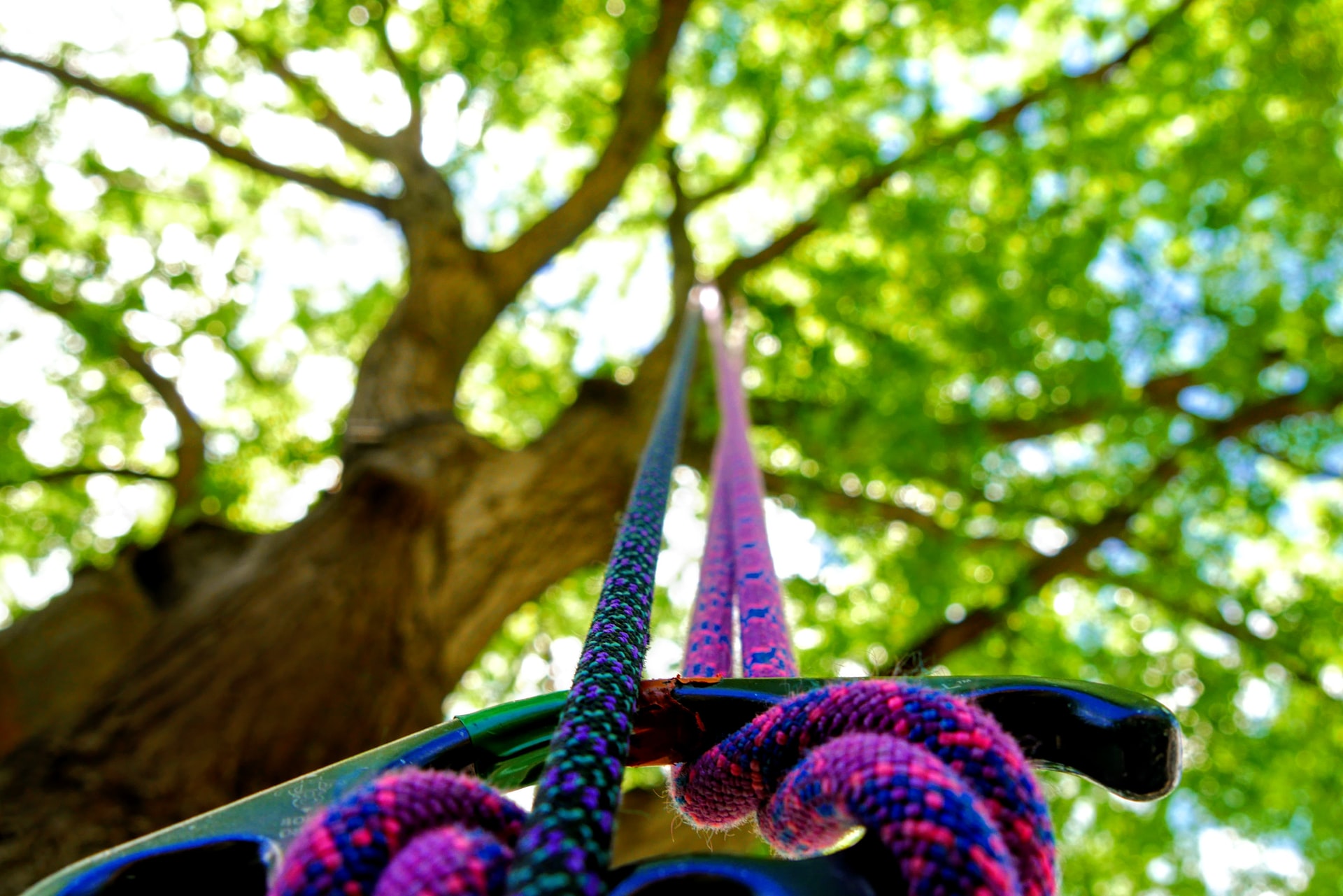There are multiple reasons why you might need to climb a tree or a pole. However, the most important things to consider there are your safety and how easy it is to climb. Luckily, with the gaff, the process becomes more streamlined.
Ideally, there are two popular types of gaffs that are up for the job, which are the tree gaffs and the pole gaffs. If you want to know which one you should use, this article is for you!
Today, we’ll walk you through a brief head-to-head comparison to help you choose your ideal pick. Let’s dive right in!
What Are Tree Gaffs?
Tree gaffs are among the simplest yet most effective pieces of equipment while climbing a tree. Although they’ve been around for a long time, they still function quite well!
Some people also call them “climbing spurs”, “tree spikes”, or “tree hooks” because of how they look.
As the names suggest, these gaffs use metal spikes and hooks to give the climber a powerful foothold on a tree while being strapped securely to the climber’s feet to provide safety.
What Are Pole Gaffs?
Pole gaffs, on the other hand, aren’t much different from tree gaffs. These ones also use spikes that get attached to trees and poles to help you climb easily.
Being a more advanced product, pole gaffs usually come with a leather pad with cushioning for comfort while climbing.
It’s also designed with spikes for climbing that are set in a way that allows you to attach the gaffs to a tree at a 45-degree angle.
A Brief Comparison Between Tree and Pole Gaffs
Now that you know more about both types of gaffs, let’s put them in a one on one comparison, so you can find out which one is a better pick for you:
Construction and Durability
Tree gaff spurs are usually made of durable metals like steel. However, in an effort to modernize the device and make it easier to use, lightweight materials that are equally durable are sometimes used, such as titanium, carbon fiber, and alloys.
The choice between steel and other materials relies on whether you prefer to dig into trees with a heavy spur or you want a lightweight material that won’t weigh you down. All in all, tree gaffs are extremely durable and you can count on them to bear a lot of weight without breaking.
Pole gaffs are also quite durable and are designed for easier use, which makes them faster at climbing, and therefore, remarkably more functional than a pair of tree gaffs. Not only that, but the design of pole gaffs also allows you to take a break every now and then
When it comes to durability, both of them are fairly similar. However, if we’re comparing the build quality in terms of comfort and ease of use, pole gaffs will win with a reasonable margin.
Trees and Bark Climbing
The type of tree you’re trying to climb is also a major factor to consider while choosing between tree and pole gaffs.
On one side, tree gaffs are built to dig deeper into tree barks with higher heel angles. This makes them an excellent choice if you want a pair of gaffs to climb softwood trees.
Yet, you should know that tree gaffs are more or less a thin bark tool, so you won’t be able to use them with thick bark trees. For that reason, you can use them for climbing trees like redwood, cedar, and pine with relative ease.
On the flip side, pole gaffs aren’t exactly built to tackle thick bark. But that doesn’t mean they can’t do it. Instead, they’re designed to tackle hardwood trees with thin bark, such as palm trees.
Pole Climbing
When it comes to climbing poles, it’s easy to assume the winner here! Pole gaffs are simply designed to climb large poles with maximum level of comfort as well as safety.
Alternatively, tree gaffs are built to climb poles at all because they like the thick bark structure that they’re designed to attach to. This makes pole gaffs a more versatile option that can have a wider range of applications and uses.
Angles and Adjustability
Both tree gaffs and pole gaffs climb trees in a different style, and therefore, they have different angles.
The spikes of tree gaffs allow you to climb hardwood trees at a wide range of climbing angles, which makes them suitable for various climbing styles.
Pole gaffs are much more comfortable and easier to use than tree gaffs but they have a more limited range of climbing angles, which usually revolves around 45 degrees.
Budget
Budget is another major factor that you have to consider while picking either of these gaffs. Of course, both of them have a wide range of prices, and they range from inexpensive options to high-end premium ones.
Ideally, you may find pole gaffs a little pricier than tree gaffs, especially if you’re comparing two items of the same class. While the difference in price isn’t dramatic, you may still want to keep that in mind while buying one if you’re on a limited budget.
Final Thoughts
This wraps it up for today’s guide that walks you through everything you need to know about tree and pole gaffs. As you can see, both of them are great devices that allow you to climb safely and efficiently.
As you can see, the choice between tree gaffs or pole gaffs largely depends on what you need it for and whether you don’t mind spending a little on a more suitable option.
This is because pole gaffs are a more well-rounded option that can be used for a wider range of applications but it’s also more expensive.
However, if you’re on a strict budget or you want a gaff that is optimized for climbing softwood trees with thick bark like cedar, redwood, and pines, you may opt for a tree gaff and save some extra bucks.



